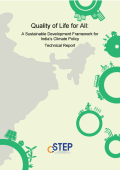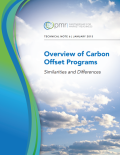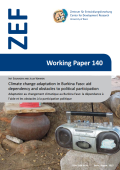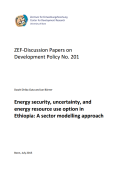
India and other countries are expected to submit their Intended Nationally Determined Contributions (INDCs) for the Conference of Parties (COP-21) in December 2015. Keeping in mind the expectation that India will experience severe impacts from global warming and the fact that a large proportion of people still require basic needs and energy services, CSTEP conducted a study examining two scenarios for India’s development by 2030: policy or Business as Usual (BAU) and Sustainable Development (SD) or quality of life. The study builds on the India Energy Security Scenarios (IESS) 2047 tool developed by NITI Aayog by adding a ‘quality of life’ dimension to the energy and emissions pathways.

This Technical Note provides a summary of the key elements and design features of 11 different carbon offset programs. It discusses the essential differences and similarities between programs, and discusses how these programs address key issues, such as: efficiency, environmental integrity, applicability, and transaction costs. It does not evaluate the implications of the different design features. This note may be useful for countries that are contemplating different designs of carbon offset programs and other crediting mechanisms.


Ethiopia’s energy sector faces critical challenges to meeting steadily increasing demand given limited infrastructure, heavy reliance on hydroelectric power, and underdevelopment of alternative energy resources. The main aim of this paper is to investigate optimal least-cost investment decisions for integrated energy source diversification. We seek to contribute to the relevant literature by paying particular attention to the role of public policy for promoting renewable energy investment and to better understand future energy security implication of various uncertainties. Dynamic linear programming model created using General Algebraic Modelling Systems (GAMS) software was used to explore the national energy security implications of uncertainties associated with technological and efficiency innovations, and climate change or drought scenarios. To cope with the impacts of drought on hydroelectric power production Ethiopia would need to invest in the development of alternative energy resources. This would improve sustainability and reliability, but these changes would also increase production costs.

The objective of this note is to identify/assess the barriers preventing local financial institutions from utilising carbon finance to support their financing activities, and to summarise existing attempts in using carbon revenues to enhance the bankability of these projects by reducing risks. The note is a deliverable under the Carbon Initiative for Development’s (CiDev’s) Methodology Work Program for FY15 supporting the Ci-Dev achieve its objective of utilizing the Clean Development Mechanism (CDM) to spur the implementation of projects in low income countries, to the extent possible, with a focus on household energy access in Africa.
